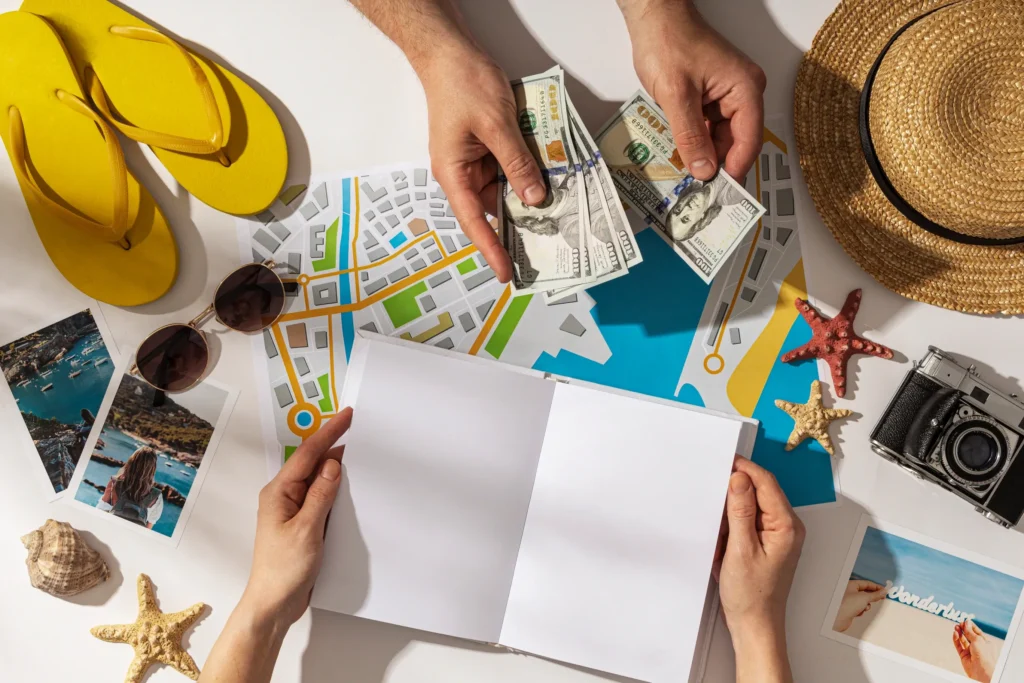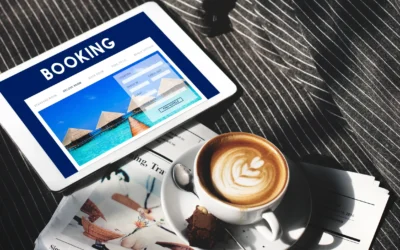Selling Tourist Packages During Low Season: Strategies and Tips

Staring down a calendar dotted with quiet months? Don’t panic – the “off-season” isn’t a sentence, it’s an opportunity.
Imagine fewer crowds, serene landscapes, local authenticity, and travelers eager to explore on a budget.
The question is: how do you convert that latent demand into real bookings?
The answer lies in combining smart marketing, strategic pricing, and strong local SEO to turn off-peak periods into viable revenue windows.
Table of Contents
Why Local SEO Is More Important Than Ever (Especially for Off-Season)
Local SEO is your digital lever for capturing geographically relevant demand. In 2025, it’s even more critical for tourism and hospitality businesses.
According to Think with Google’s 2025 travel insights, nearly 60% of travelers start their trip planning on mobile – and over half use “near me” searches when booking local experiences.
At the same time, AI-powered and voice-assisted search are reshaping how users discover destinations.
The BrightLocal 2025 Expert Predictions Report confirms that businesses optimizing for conversational keywords and location-based intent see faster visibility growth and stronger organic conversion rates.
Other current trends highlight why local SEO matters more than ever:
- Voice & conversational search: Queries like “best winter hikes near me” or “romantic getaways off-season” are increasingly common.
- Visual search: Tools such as Google Lens and image-based discovery are becoming standard in destination research.
- Reputation signals: Review velocity and business responses directly impact ranking and click-through rates.
In short: the way travelers search is changing – and local SEO ensures you stay visible in that evolving landscape.
Creating Appealing Off-Season Packages
To appeal to off-peak travelers, your packages must feel unique, relevant, and fairly priced. Here’s how to build them effectively:
Emphasize Local & Seasonal Highlights
Highlight off-season-only experiences – peaceful beaches, cozy cafés, or seasonal festivals – that aren’t available in the high season.
According to BrightLocal’s 2025 SMB Marketing Report, businesses emphasizing local experiences and authentic community ties attract up to 38% more engagement from travelers seeking real, place-based value.
Tailor to Specific Interests
Segment your audience and build packages for niche travelers:
- Eco-tourists: Off-season means less environmental pressure.
- Wellness seekers: Offer spa or mindfulness retreats.
- Photographers: Market unique light, quiet landscapes, and fewer tourists.
Use trend data from Google’s travel research to guide what types of experiences travelers are actively searching for during quieter months.

Build Bundles & Dynamic Offers
Let guests combine lodging, activities, and transport with flexible dynamic pricing – a model that adapts to demand and seasonality.
This concept, known as dynamic packaging, increases control over margins while improving booking convenience.
Add experiential extras like cooking classes, hiking tours, or art workshops to increase perceived value.
Use SEO-Driven Descriptions & Visuals
When writing package descriptions, use long-tail local keywords like “affordable autumn getaways near Lisbon” or “winter activities in Zakopane.”
Include geotagged photos and videos optimized for Google Discover or Instagram Reels – visual search now plays a direct role in conversions.Use structured data markup (Local Business, Event, Tour) to help search engines display your listings correctly.
Local Partnerships & Cross-Promotions
Collaborate with local cafés, art galleries, and transport companies to create multi-brand packages.
Partnerships not only boost reach but also generate backlinks – a factor confirmed by the BrightLocal Local SEO Statistics 2025, which found that local link-building remains one of the strongest ranking signals for small businesses.
Boosting Visibility Through Local SEO

Once your offers are live, make sure your audience can find them.
Optimize Google Business Profile
Claim and optimize your Google Business Profile:
- Add fresh, high-quality photos and up-to-date hours.
- Post offers regularly and encourage reviews after each trip.
- Use attributes such as “family-friendly” or “eco-certified” to stand out.
Google’s data indicates that complete and active profiles receive up to 2.7× more engagement than inactive ones.
Leverage Local Content & Citations
Run Google Ads and Meta Ads campaigns targeting nearby cities or drive markets.
According to the BrightLocal SMB Marketing 2025 Report, businesses that use geo-targeting see conversion rates 2–3× higher than those using broad targeting.
Monitoring and Adjusting Strategies
- Track Performance: Use SEO tools like: Ahrefs or Semrush to monitor your local search rankings and adjust techniques based on performance insights.
These concentrated strategies enable businesses to efficiently reach and engage their ideal audience through local SEO, enhancing marketing effectiveness and customer acquisition.
Smart Pricing for the Off-Season
The right pricing model can turn slower months into profitable ones.
Embrace Dynamic Pricing
Adjust rates based on demand, competition, and local events.
Studies show that dynamic pricing in hospitality can improve occupancy by up to 20% during low demand periods (source: internal data aggregated from Google’s hotel partners).
Combine:
- Early-bird discounts to secure advance bookings,
- Last-minute offers to fill remaining capacity,
- Bundled packages that include meals or activities,
- Loyalty incentives for repeat guests.
Promotions with a Purpose
Design themed weekends such as “Cozy Winter Wine Tour” or “Off-Season Culinary Escape.” Add experiential bonuses – yoga sessions, local workshops, or wellness add-ons – to increase perceived value.
According to industry insights from Expedia Group (2025), micro-events and thematic stays generate higher guest satisfaction and repeat visits.
Transparency & Value Proposition
Be upfront about inclusions, cancellations, and service availability.
Highlight benefits of off-season travel – smaller crowds, better service, authentic local connection – to justify price differences.
Measure, Analyze, and Adapt
Use Google Analytics 4 and Google Search Console to track performance:
- Identify which keywords and packages drive conversions.
- Monitor seasonal trends and competitor pricing.
- Test headlines, visuals, and CTAs to refine your messaging.
Continuous optimization ensures you stay agile and competitive – even when the market slows down.

Conclusion
Selling tourist packages during the low season isn’t about slashing prices – it’s about positioning your brand where the opportunity lies.
By pairing local SEO best practices, creative promotions, and data-driven pricing, your travel business can turn quiet months into high-value growth periods.
In 2025’s search-driven travel landscape, those who adapt their SEO and marketing strategies seasonally will thrive all year long.
FAQ: Selling Tourist Packages During the Low Season
Why is local SEO important for off-season travel?
It helps travelers find your business when they search for nearby experiences or deals. Good local SEO boosts visibility, trust, and booking conversions.
What marketing strategies work best during the low season?
Focus on localized content, social media engagement, and collaborations with nearby businesses to attract regional travelers.
How does dynamic pricing increase bookings?
It adjusts rates based on demand, helping you fill empty slots and maximize profit during slower months.
What types of packages attract off-season travelers?
Travelers love authentic, experience-based packages like culinary weekends, wellness retreats, or cultural workshops.
Do reviews really influence low-season sales?
Yes – positive, recent reviews increase trust and often determine whether a traveler books or not.
How can I measure SEO success for off-season campaigns?
Track traffic, conversions, and keyword rankings to see which pages or offers bring the most bookings.
Is paid advertising worth it in the low season?
Yes, ads are often cheaper and more effective when competition is lower, especially with local targeting.
How can my offers stand out online?
Use strong visuals, authentic storytelling, and clear value – not just discounts – to capture attention.
How do partnerships help increase bookings?
Collaborating with local attractions or restaurants expands reach and adds extra value to your packages.
What are the main benefits of promoting off-season travel?
You gain a steady income, build loyalty, and offer travelers a more relaxed and authentic experience.


